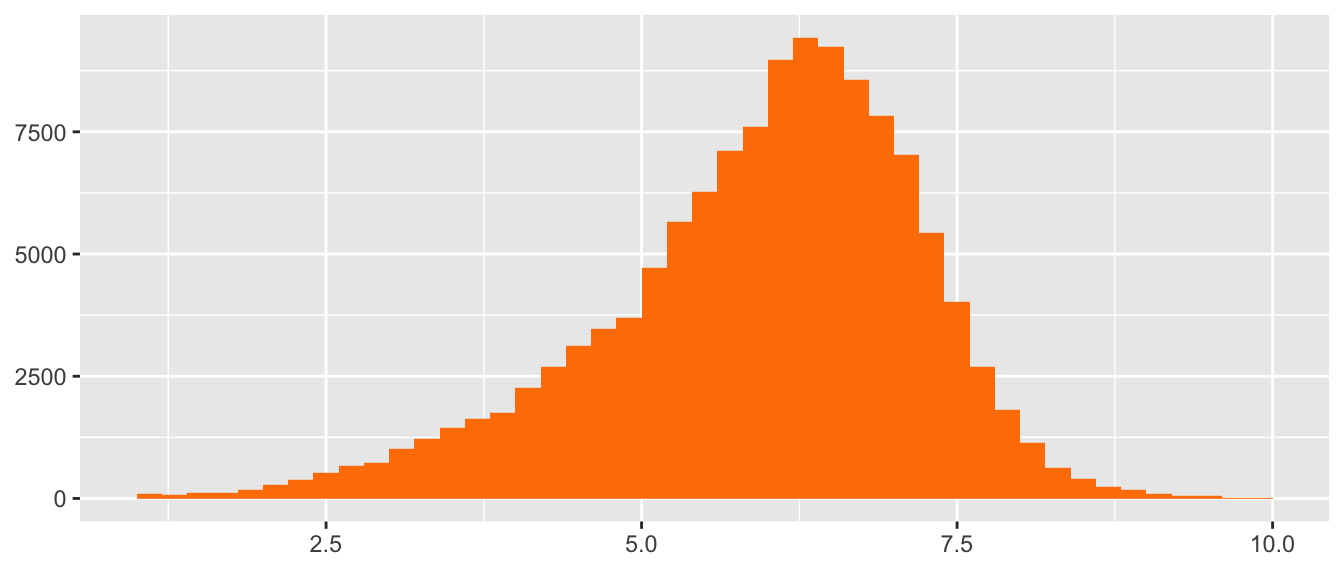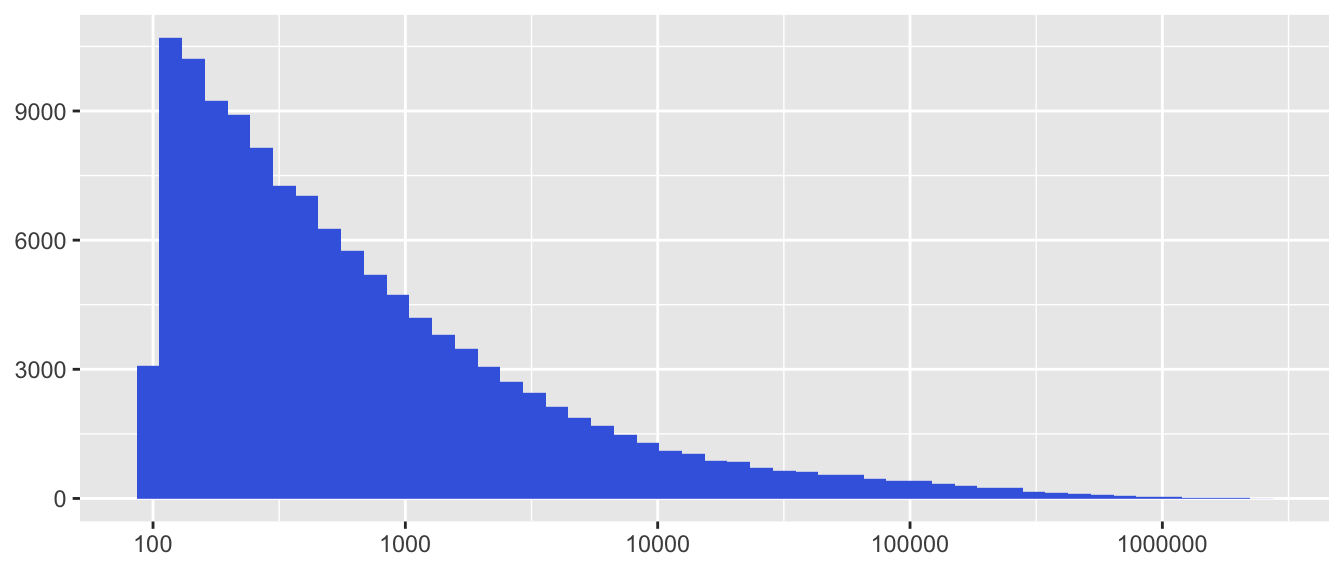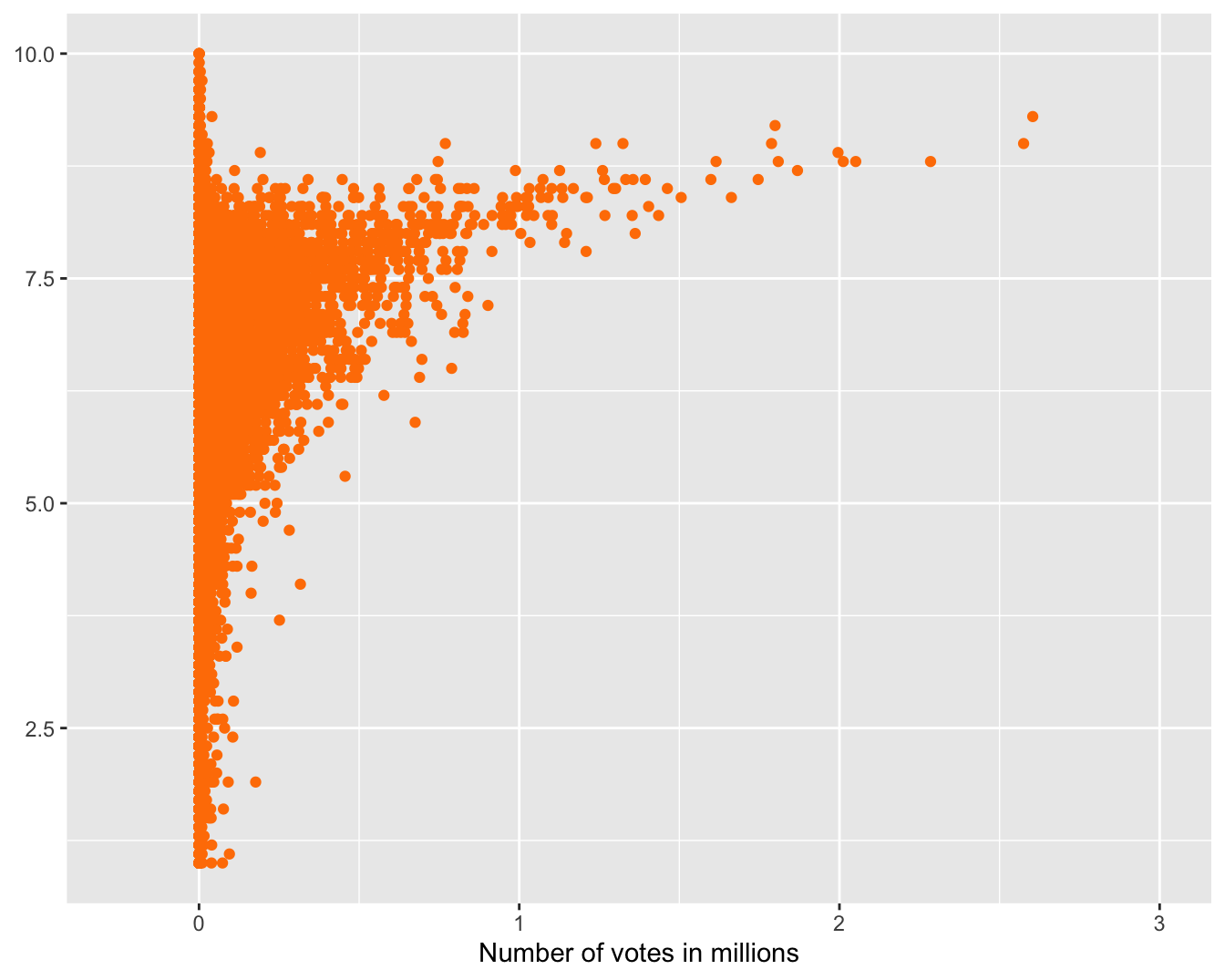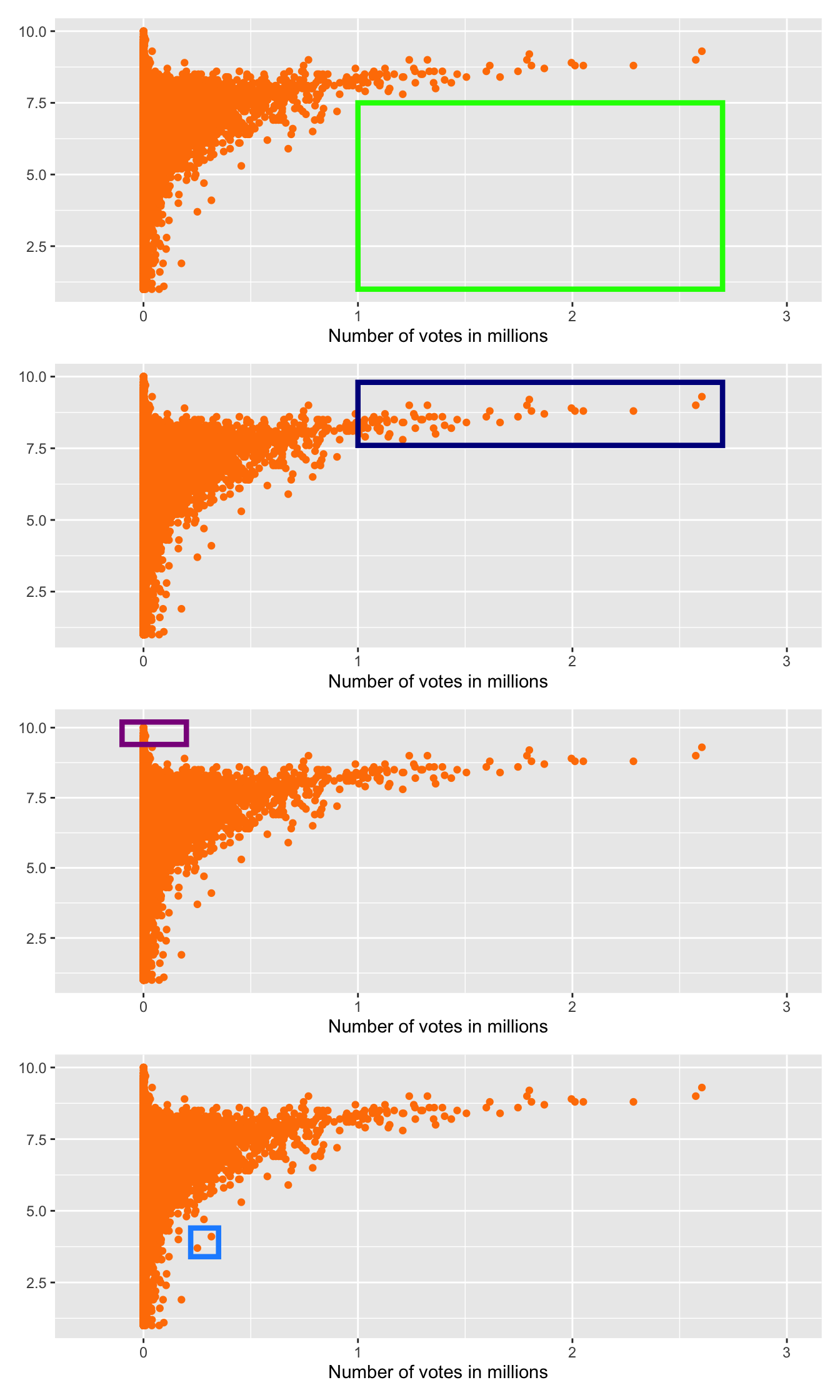3.4 What ratings do people give films?
Users can give films a rating from 1 to 10. IMDb applies an unpublished algorithm to calculate a weighted average rating for every film. The distribution of average ratings for films is shown in Figure 3.7.

Figure 3.7: Average user ratings for movies with over 100 ratings
These average user ratings are based on anything from 101 votes to over two and a half million. Average ratings tend to be higher rather than lower.
The distribution of the number of ratings is skewed to the right, meaning that most films do not get many ratings and a few get a large number of ratings. After taking logs to see more, the distribution is still skew, albeit less so, as is shown in Figure 3.8.

Figure 3.8: Numbers of votes for each movie on a log base 10 scale
Figure 3.9 shows how the average rating for films relates to the number of ratings submitted. This is a plot of 124667 films, so many of the points to the left represent a large number of films. The points have been drawn relatively large and with no use of alpha transparency to ensure that high and outlying values can be seen. As an example of the density of points with low numbers of ratings, there are 2621 films that were rated between 100 and 500 times and have an average rating of 6.3. The plot has an unusual form, like a lower case r, with several features that are marked by boxes in Figure 3.10.

Figure 3.9: Average user rating by number of votes

Figure 3.10: User ratings by number of votes with features marked by boxes
There are no films with a low rating and many votes (the first plot of Figure 3.10). The relatively few films rated by over a million users all have a high average rating (second plot of Figure 3.10). However, the highest average ratings are achieved by films with much fewer votes (third plot of Figure 3.10)—possibly the support of family, friends, and colleagues? A few films have low average ratings compared with other films receiving the same number of votes (fourth plot of Figure 3.10). “Batman & Robin” (over 250,000 votes and an average rating of 3.7) and “Fifty Shades of Grey” (over 300,000 and 4.1) are two examples.